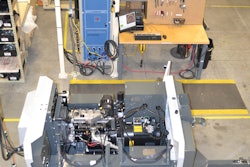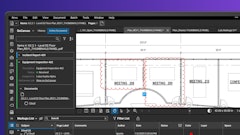
By Maribel Scarnecchia, Deltek
The key to a successful construction software implementation is planning. After 10 years of experience guiding contractors through implementations, I can conclude that most companies need around eight weeks of planning and preparation time before going live on a new construction software system. More nimble companies may be able to shorten that duration to six weeks and very large companies may want to spend more time preparing for their conversion.
Once a contractor purchases a construction software solution, the vendor typically initiates contact to schedule a discovery session. This is an important question-and-answer time that will put both parties on the same page regarding expectations. At the end discovery, a go-live date will be set, the contractor will be given supporting materials such as implementation checklists and guides, and the first task will be scheduled.
Eight weeks before going live
Task: set up core databases
Duration: approximately two weeks
The first construction software implementation task is to set up the company and the core accounting databases in the new software. The databases include vendors in accounts payable, customers in accounts receivable, employees in payroll, and the chart of accounts in the general ledger. This is also the time to set up related information, like union and workers’ compensation codes in payroll.
If a company is satisfied with its current database structure, this task will be fairly straight-forward. Migrating to a new construction software provides the opportunity to review and improve accounting setups. Switching from a short, numeric-only vendor code setup to a longer and more flexible alpha-numeric code structure is one example.
Six weeks before going live
Task: set up job cost
Duration: approximately two weeks
Job cost is the heart of a construction accounting software system — and the most critical component of a contractor’s software implementation. Don’t rush through the task by simply duplicating your current job cost set up in the new system. New construction software means new job costing features and options that deserve consideration. After all, what’s the point of implementing new software if it doesn’t improve the company’s ability to manage jobs?
After a general job cost discussion, it’s important to discuss the specific flow of information between the office and the field to make sure every need is addressed by the new construction accounting software. Getting the owner, estimators and field team involved at this point is a good idea especially when discussing related topics and modules such as job buy-out, change orders, purchasing, subcontracts, equipment management, and so forth.
Four weeks before going live
Task: setup additional modules
Duration: approximately one week
After setting up the core construction accounting modules and investing a considerable amount of time discussing the nuances of job cost, it’s time for the contractor to set up additional modules that have been purchased, including those mentioned in the job cost discussion above. If a company has laid a solid foundation during the earlier setups, getting the additional modules in go-live shape should be relatively easy.
Three weeks before going live
Task: process training
Duration: approximately two weeks
Now that the company’s various modules are set up, it’s time for process training using real data in practice mode. Construction company employees that learn how to use construction software by performing tasks using their own company data, jobs and employees will not only retain more of what they learn, but will also be able to validate that the software set up supports their workflow as intended.
Although many vendors still recommend onsite training during a software implementation, new technology such as screen sharing and conferencing allow implementation specialists to perform expert training from a remote location. This eliminates the expense of onsite training, and allows the contractor’s staff to learn how to use the new software in shorter, more effective blocks of time and interfere less with their day-to-day job responsibilities. If the contractor’s budget allows for it, having a trainer come onsite during the go-live transition can be extremely helpful.
One week before going live
Task: testing and data migration
Duration: approximately one week
With process training complete, it’s time to run test payrolls and discuss how go-live data migration will be handled. Critical go-live data includes payroll year-to-date balances, outstanding accounts payable invoices, accounts receivable items, purchase orders, subcontract agreements, year-to-date job totals, and the trial balance.
With today’s technology, exporting information from the contractor’s existing software system into a commonly used clean-up application, and then importing the data into the new software, is not a complex task for an experienced implementation specialist.
Going live and beyond
If all the tasks outlined above are completed, going live with new construction accounting software should be something of a non-event. By following the implementation specialist’s instructions and doing the necessary planning to prepare for each task, issues that could delay the go-live date should be avoided. Your new construction software will help power job success, like this example of a large mechanical contractor that migrated from QuickBooks to Deltek + ComputerEase.
Going live with new construction software is not the end of the implementation. Once a company is using its new software daily, questions typically arise. Your software provider will need an active, available support team to answer those questions and keep your company’s productivity high.
Even if everything is going well, it’s a good idea to have the implementation specialist walk the accounting staff through the first payroll processing and the first month-end close-out. Finally, to optimize the ROI of your new construction accounting software, we recommend additional training or communication with your implementation specialist four to six months after going live.


















